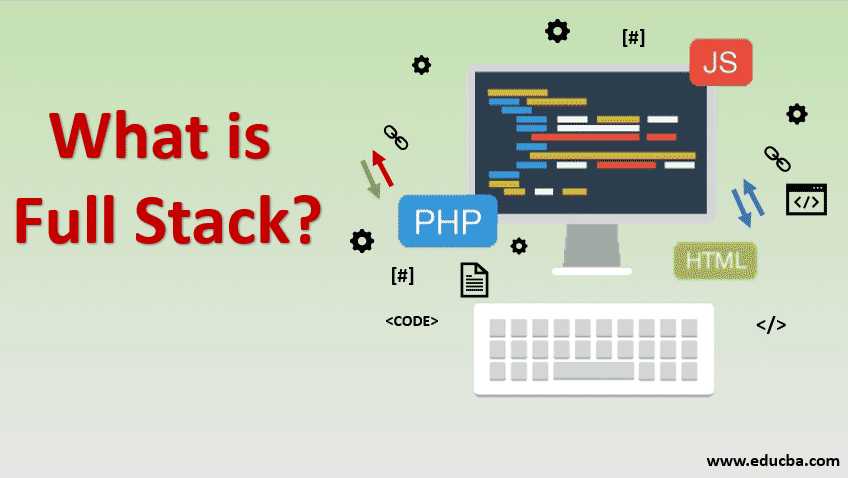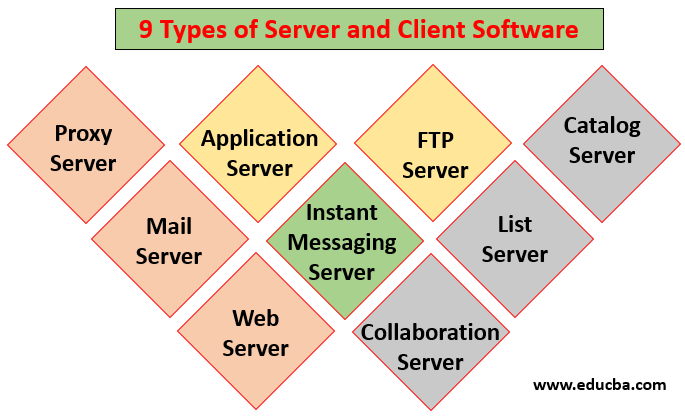Updated March 18, 2023
What is Full-Stack?
Web developers are completely loaded and are able to build a complete web application and website. They are interested in interfaces, backgrounds, databases, and website debugging. Full Stack Developer integrates user specifications and incorporates new systems into the global architecture. A Full Stack Developer masters, not even all technologies. However, the professional will work on the client as well as on the server-side and understand what happens when an application is developed. He or she should be sincerely concerned about any information technology.
Applications of Full Stack
Full Stack developers should know front-end and back-end programming, hardware, and their working, Operating systems, networks, databases, and security of the system. Full Stack development is used in many applications as the developer does not require any dependency on others.
- The developer should know the databases and work on them. The creation and querying of databases are important for the developer, which helps him to manage the databases when any problem occurs.
- Since the developer is working in the back end, if any breakdown happens, he should be able to tackle the problem with the hardware and Operating System efficiently.
- Managing the projects and client communication should be done well by a full-stack developer as it is important in the development of the project.
- Full-stack developers should manage application programming as APIs should be created and managed using back-end programming languages such as Python, Angular, etc.
- One should be an expert in front-end programming such as HTML, Java, and JavaScript.
- Security of the system and applications are important as they can be attacked anytime by ransomware. Developers should know the basics of security in the system.
- The system should be well connected with other systems in the network to work efficiently. Full Stack Developer should have ideas of networking as well.
Importance of Full Stack
The developer gets updates about new technologies faster than any other developers who work in the front end or back end because they know other applications well. Hence they need to update themselves to develop the application. Independent coding can help the developer feel that he is important for the project and he feels motivated.
The unique code and coding style help the client understand the project well and thus feels the work is not similar. Since the developer is well-versed in different technologies, the website’s look and feel or whatever they create will be different from others. And they will be able to make every project uniquely. Based on the company’s requirements, the developer can switch between the front end and the back end.
Top 9 Types of Server and Client Software
The client is at the receiving end of the service, or we can call it an end-user. The server provides information needed by the client. The server handles the clients’ requests coming from different systems. A server platform acts as an engine to run the server, which forms the software or hardware base.
Types of servers are:
1. Proxy Server: The server between the web browser and the external server to filter requests and to share connections is called a proxy server.
2. Mail Server: Mail servers are important and unavoidable as it stores the mails in the corporate network and over the internet.
3. Web Server: This server gives necessary information or files required by users through the internet to the web browser. The communication is done by using HTTP.
4. Application Server: The middleman between the database server and the end-user or the web browser is called an application server.
5. Instant Messaging Server: This is also called real-time communication server that helps users in instant messaging to exchange information.
6. FTP Server: This server helps to move files between computers with high security to the files. File Transfer Protocol is a traditional internet service.
7. Collaboration Server: This server provides a virtual environment to the users irrespective of the location and thus helps in collaborating the work.
8. List Server: List Servers manage the mailing lists or contact lists of the people to send mails.
9. Catalog Server: The server that maintains a catalog of information about different clients, files, etc., is called a catalog server. Other servers are file servers, communications server, database server, computing server, fax server, media servers, sound servers, and game servers.
Advantages & Disadvantages of Full Stack
Given below are the advantages and disadvantages mentioned:
Advantages:
- It is easy to find a job as a Full Stack developer.
- Full Stack developer is good at anything related to application development.
- They can manage the entire application without any dependencies.
- The applications can be made new without any duplication since the developer knows all the applications.
- The experience of the developer helps in the application development in different ways since he/she has worked in different projects either as a front-end or back-end developer.
- They can get a full picture of the application development and design. This helps in the proper management of the project.
- Since they are up-to-date with all technologies, they can make the application or website user-friendly.
- The developers know all levels of the project, which helps in communicating with the client properly about the product. Also, they can do the presentations or do the documentations way better than others.
- Troubleshooting of the application can be done easily by a Full Stack developer.
Disadvantages:
- One who is an expert in a language will perform better than a Full-Stack developer. Jack of all trades master of none is apt for Full Stack developer.
- A developer can’t learn anything deeply since he/she has to learn everything related to the application.
- The working process can be really slow as the developer has to check himself while handling different languages.
- The developers are difficult to replace; vacation or delegation of work is a long-cherished dream.
Jobs for Full-Stack developers are increasing daily, and the salary is also really high. When one prepares to become a Full-Stack developer, he should be prepared to learn many languages, manage the project, and communicate with customers effectively.
Recommended Articles
This is a guide to What is Full Stack? Here we discuss the basic concept, applications, top 9 types of server and client software, advantages and disadvantages. You can also go through our suggested articles to learn more –




